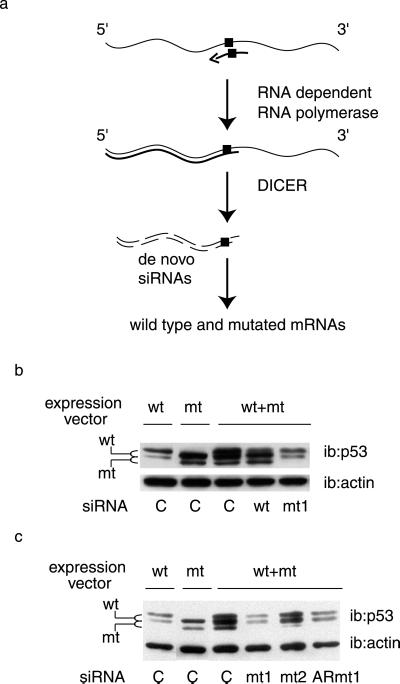Fig 2.
Selectivity of mutant p53 inhibition. (a) Schematic model of a putative amplification process that would abolish the specificity of targeting point-mutated sequences: the antisense strand of the siRNA (arrow) is used as a primer by a putative RNA-dependent RNA polymerase for RNA strand elongation, resulting in a double-stranded 5′ portion of the target mRNA; this double-stranded sequence would in turn serve as a substrate for DICER which would result in siRNAs corresponding to the 5′ end of the target, which is common to both WT and mutant siRNAs. The square represents the single base mutation. (b and c) H1299 cells were transfected as in Fig. 1, with WT or R248W mutant (mt) expression vectors, alone or in combination, as indicated, along with the specified siRNAs, and analyzed by Western blotting 24 h later with the indicated antibodies.

